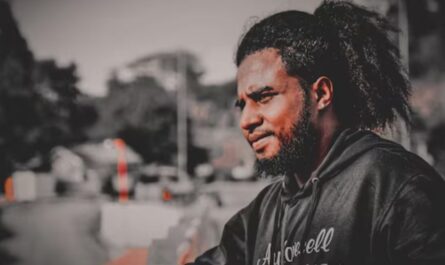The political climate in Pakistan is once again under the spotlight as the Pakistan Tehreek-e-Insaf (PTI) party, led by Imran Khan, stages widespread protests across the country. These protests have become a symbol of political resistance and a call for reforms aimed at strengthening Pakistan’s democracy. This article provides an in-depth look into the PTI protests, analyzing their triggers, developments, implications, and public response.
PTI Protest in Pakistan: Key Developments
What Led to the PTI Protests?
The ongoing PTI protests are rooted in political events that date back to Imran Khan’s ousting as Prime Minister in April 2022. Khan alleges that his removal was orchestrated through an external conspiracy, coupled with internal political maneuvering. The protests are an extension of PTI’s narrative of fighting corruption, ensuring electoral transparency, and addressing governance challenges.

Key reasons fueling the protests include:
- Removal from Office: Imran Khan’s removal via a parliamentary vote of no-confidence triggered widespread dissent among PTI supporters.
- Economic Decline: Rising inflation and unemployment have exacerbated public grievances.
- Crackdown on PTI Leadership: Arrests of PTI leaders and restrictions on public gatherings have intensified the protests.
Timeline of PTI Protests
The protests have unfolded in phases, escalating over time:
- Initial Protests: PTI held rallies in major cities like Lahore, Islamabad, and Peshawar to mobilize supporters.
- Long Marches: In an attempt to pressurize the government, PTI organized marches to Islamabad, reminiscent of their 2014 sit-ins.
- Nationwide Strikes: Khan called for nationwide strikes, urging citizens to show solidarity with the movement.
- Clashes with Authorities: Several confrontations between PTI supporters and law enforcement have been reported, resulting in injuries and arrests.
The Role of Imran Khan in Mobilizing Support
Imran Khan remains a central figure in PTI’s movement. His ability to connect with the masses, particularly the youth, has been instrumental in sustaining momentum.
- Charismatic Leadership: Khan’s speeches emphasize anti-corruption, justice, and sovereignty.
- Social Media Strategy: PTI’s robust social media campaigns amplify its messages, making them accessible to millions.
- Grassroots Engagement: PTI has effectively utilized grassroots networks to organize rallies and strikes.
Government’s Response to PTI Protests
The government has adopted a multi-faceted approach to manage the protests:
- Security Measures: Deployment of police and paramilitary forces in protest-prone areas.
- Media Restrictions: Allegations of censorship and attempts to limit media coverage.
- Negotiation Offers: Public calls for dialogue to defuse tensions.
Despite these efforts, the protests continue to gain traction, reflecting public dissatisfaction with the current administration.

Public Perception of the PTI Protests
Supporters’ Perspective
PTI supporters view the protests as a fight for democratic values and national sovereignty. They believe Imran Khan’s leadership is essential for Pakistan’s progress.
Critics’ Viewpoint
Critics argue that the protests disrupt daily life and strain an already fragile economy. Some also question PTI’s claims of electoral fraud.
Neutral Observers
Neutral analysts highlight the need for institutional reforms to address systemic issues fueling political instability.
Economic and Social Impact of Protests
The PTI protests have far-reaching implications for Pakistan’s economy and society:
- Economic Challenges:
- Blocked roads and strikes disrupt trade and transportation.
- Investor confidence is shaken due to political uncertainty.
- Social Polarization:
- The protests have deepened divisions between PTI supporters and opponents.
- Public discourse has become increasingly polarized, impacting social cohesion.
- Global Attention:
- International media coverage has brought global scrutiny to Pakistan’s political crisis.
PTI’s Demands and Goals
The PTI protests revolve around specific demands aimed at systemic change:
- Immediate Elections: PTI calls for early general elections, arguing that the current government lacks public mandate.
- Judicial Reforms: The party seeks reforms to ensure transparency and fairness in governance.
- Electoral Accountability: PTI demands investigations into alleged electoral fraud.
How PTI Leverages Media and Technology
PTI’s use of media and technology has been a game-changer in modern political movements:
- Social Media Campaigns: Platforms like Twitter and Facebook are used to mobilize support and disseminate information.
- Live Streams: Khan’s speeches are often live-streamed, ensuring direct communication with supporters.
- Hashtag Movements: PTI frequently trends on social media, amplifying its reach.
Challenges Facing the PTI Protests
While the PTI protests have garnered significant support, they face challenges:
- Sustainability: Prolonged protests can lead to fatigue among supporters.
- Legal Hurdles: Government-imposed bans on gatherings limit the scope of demonstrations.
- Economic Constraints: The financial cost of organizing large-scale protests is substantial.
International Reactions to PTI Protests
The PTI protests have drawn reactions from international organizations and foreign governments:
- Human Rights Concerns: Amnesty International has raised concerns about alleged crackdowns on protesters.
- Diplomatic Responses: Countries with strategic interests in Pakistan monitor the situation closely.
- Media Coverage: Global media outlets like BBC and Al Jazeera report extensively on the protests.

FAQs on PTI Protests in Pakistan
What is the primary goal of the PTI protests?
PTI seeks immediate general elections and transparency in governance.
Are the protests peaceful?
While most demonstrations are peaceful, clashes with law enforcement have occurred.
How has the government responded to the protests?
The government has deployed security forces, restricted media coverage, and offered negotiations.
What impact do the protests have on Pakistan’s economy?
The protests disrupt trade and daily operations, contributing to economic instability.
What role does social media play in the protests?
Social media is a key tool for PTI to mobilize support and disseminate information.
Conclusion
The PTI protests in Pakistan represent a significant chapter in the country’s political narrative. Rooted in demands for justice and transparency, the movement underscores the need for democratic reforms. While challenges persist, the protests continue to shape public discourse and influence Pakistan’s political trajectory.
For more updates on this evolving story, stay connected as we track developments and analyze their implications for Pakistan’s future.


